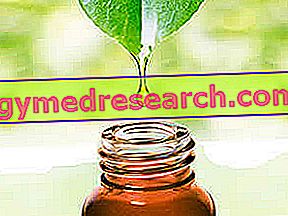What is dandruff?
Dandruff is a very common disorder in which the scalp is covered with an abundant whitish scaling. These small flakes, dry and pearly, are nothing but residues of dead cells, whose replacement takes place more quickly than normal.

The good news is that dandruff can usually be effectively controlled. When the disorder is not too accentuated, it is sufficient to wash daily with special shampoos or lotions, endowed with a certain fungicidal power and an effective cleansing base, but at the same time not irritating to the epidermis.
Dandruff is a typically male problem; males, in fact, produce greater quantities of sebum, probably due to the higher levels of androgens. Although with less frequency and intensity, the disorder is still widespread even in the fairer sex.
Dandruff usually appears in early adulthood and tends to regress after 35-40 years. It is rare in children and the elderly.
Causes
What are the causes that cause dandruff?
On the genesis of this disorder have been put forward the most varied hypotheses, such as poor diet, stress, a natural tendency to dry the scalp, excessive production of sebum or too frequent washing, or too sparse, with products unsuitable for own characteristics. Although some of these elements can actually contribute to accentuating dandruff, they are hardly the main cause. In many cases, in fact, the real culprit is a fungus, Malassezia furfur (also called Pityrosporum), which lives on the scalp of most people without creating any discomfort. The problems occur as soon as the colonies become too numerous and, feeding on the sebum that breaks down into irritating fatty acids, accelerate the epidermal cell turnover.
The exact cause that leads to the uncontrolled proliferation of Pityrospum is not known; in this regard the old hypotheses listed at the beginning of the paragraph have been dusted off: increased sebum production, dry skin, stress, certain diseases, weakness of the immune system, excessive or insufficient number of washes and hormonal imbalances (in particular the increase in androgen hormones or the increased local sensitivity to their action).
Now let's see in detail some classic factors that can trigger or accentuate the disorder:
- Dry skin : is responsible for "dry" dandruff, characterized by dehydrated scales, fine and greyish, accompanied by itching, but without particular signs of skin irritation.
- Oily skin : it is responsible for "fat" dandruff, characterized by thick, yellowish and oily scales, which fall from an equally fat scalp. It is caused by the so-called seborrheic dermatitis, a condition that leads to the loss of oily scales not only from the scalp, but also from other areas rich in sebaceous glands, such as the eyebrows, the skin areas on the sides of the nose and behind the ears, the groin area and sometimes the axillary area.
- Psoriasis : it is a chronic inflammatory disease of the skin, non-infectious, which affects about 1% of the population. It causes an accumulation of dead skin cells, which form thick silvery scales on skin areas covered with patches and reddish plaques. These manifestations are localized above all in the knees, the sacral region, the elbows, the hands, the feet and in the scalp where, above all in the most nervous subjects, they cause an intense and annoying itching.
- Contact dermatitis : it is due to sensitization to particular substances, such as those contained in certain products used for washing or hair care. May be accompanied by dandruff and itching.
- Cradle cap : it is a disorder that occurs in the first months of life of children.
To learn more: Dandruff - Causes and Symptoms »
Treatment
Except in rare cases in which it occurs temporarily and then disappears, for example following a stressful period or eating disorders, dandruff is a chronic disorder, which can be controlled using special products with a certain perseverance.
Generally, daily cleaning with a mild shampoo significantly reduces the oiliness and accumulation of dead cells. If this is not enough, you need to use specific dandruff shampoos, trying different ones until you find the one that best suits your needs. In fact, the best thing to do would be to undergo a dermatological medical examination, to investigate the causes and characteristics of dandruff and thus choose the most suitable shampoo or lotion.
The anti-dandruff products differ according to the active ingredient they contain, including:
- Zinc pyrithone : this antibacterial and antifungal agent has been shown to be effective in reducing the microbial population that fills the scalp.
- Tar : by slowing the rate of cell replacement, coal tar can be useful in the treatment of dandruff and seborrheic dermatitis. However, in addition to the generally unpleasant smell, it can be irritating.
- Selenium sulphate : similar to what we saw in the previous case, using shampoos and lotions containing this active ingredient, we go to reduce the speed of exchange of the cells of the superficial layer of the skin. Selenium sulfate also has a modest fungicidal action. Since these products can bleach lighter or more colored hair, it is important to follow the instructions on the label and rinse thoroughly after use.
- Ketoconazole : it is one of the last and most effective active ingredients used in the treatment of dandruff. Ketoconazole is, in fact, a broad-spectrum antifungal agent, which can be effective when all other products have failed.
- Phytotherapeutic products : chilli extracts, apple vinegar and essential oils of eucalyptus, rosemary, lemon, sage and nettle are widely used. Tea tree oil (or essential oil of Melaleuca alternifolia ) is also well known, used for its antiseptic and antifungal properties; seems effective against dandruff but may cause allergic reactions in predisposed individuals.
Anti-dandruff products can be used daily until the disturbance is checked; at that point it is good to use them on 3 weekly occasions, alternating them, if frequent washing is required, with particularly delicate products. The application time, generally at least one minute, should comply with the manufacturer's instructions, so as to allow the active ingredients to work for a sufficient time.
If all these attentions did not produce the desired effects, dandruff should become a problem of medical competence. After a careful visit, the dermatologist could therefore prescribe particular products, available only in pharmacies, or a treatment based on corticosteroids.
Useful tips
In addition to using suitable products, the dandruff disorder can be counteracted, or at least alleviated, by making some small changes in one's habits and lifestyle. In this regard, we report some useful tips:
- Learn to manage stress rationally, giving yourself regenerating breaks when you need it.
- Wash your hair frequently: even though the popular belief that frequent washing would increase dandruff and hair loss does not occur, a daily cleansing with delicate products helps remove excess sebum and prevent dandruff.
- Pursue a diet rich in fruit and vegetables, but also fish and "lean" proteins, to ensure the body an adequate supply of sulfur amino acids, zinc, omega-3, antioxidants and B vitamins. At the same time it should be moderated consumption of alcohol and hyperlipidic foods, such as fatty cheeses.
- Reduce the application on the hair of cosmetics such as gels, lacquers or mousses, which can be irritating to the scalp, make it more oily and increase the itching associated with dandruff; this is generally the more truthful the more the product used is cheaper.
To learn more: Remedies Against Dandruff »



